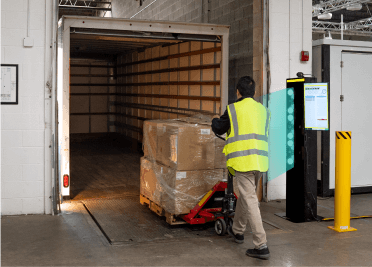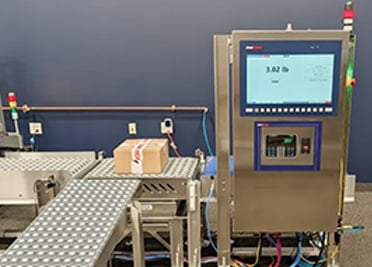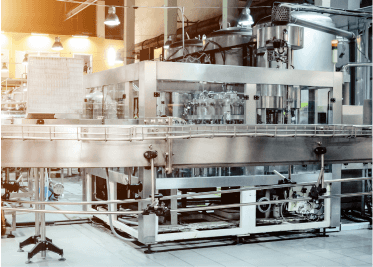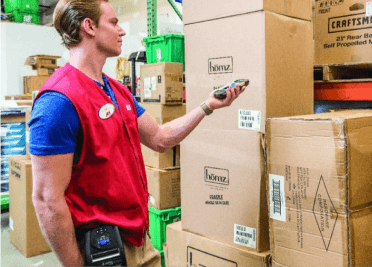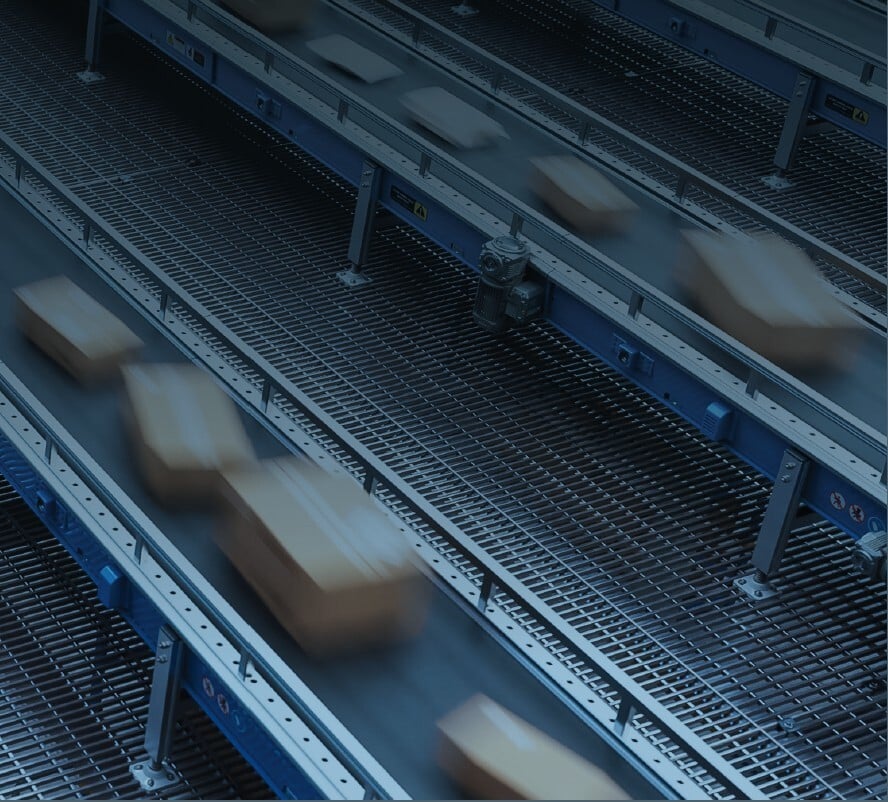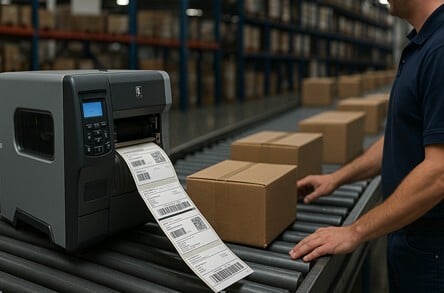Put-away is the function of moving received goods from receiving locations to inventory storage locations. In most cases, the location for each item depends on its “velocity.” High-velocity items (those that are fast movers rather than slower movers) will be stored closer to the packing/loading stations. However, there are many other process-engineering issues related to optimal put-away location: grouping similar items and locations into categories; understanding dimensions, weight, unit of measure (eaches, cases, pallets, etc.), and temperature requirements; whether it can be mixed with other items in a location; whether it is rackable; maximum stack height; maximum quantity per location; hazard classifications; finished goods or raw material, etc.
Another factor is item velocity and size, particularly for smaller items and each-pick products that can be stored in high-density areas for fast picking with little to no travel time for those doing the picking. Most warehouse management system (WMS) applications enhance the put-away process by including down-stream activities in the logic and decision process. For example, put-away decisions include which location to pick from and replenish from/to, in what sequence these events should occur, and whether the put-away is system-directed or user-directed.
Below are some additional requirements that can impact put-away logic.
- Location Sequence. This is the simplest logic; define a flow-through for the DC and assign a sequence number to each location. In order picking this is used to sequence picks to flow efficiently through the DC. The put-away logic would look for the first location in the sequence in which the product would fit.
- Zone Logic. Breaking down storage locations into zones can direct picking, put-away, or replenishment to or from specific areas of your DC. Since zone logic only designates an area, combining this with cube and labor factors is required to determine exact location within the zone.
- Fixed Location. Logic uses predetermined fixed locations per item in picking, put-away, and replenishment. Fixed locations are most often used as the primary picking location in piece-pick and case-pick operations; however, they can also be used for secondary storage.
- Flexible Location. Flexible locations generally refer to areas where products are not stored in designated fixed locations and may be temporary. Like zone logic, some additional logic is needed to determine exact locations.
- First-In-First-Out (FIFO). Directs picking from the oldest inventory first.
- Last-In-First-Out (LIFO). Opposite of FIFO. This might seem strange, but an example might be an operation that distributes perishable goods domestically and overseas. LIFO is for the overseas customers (because of longer in-transit times) and FIFO for domestic customers.
- Reserved Locations. This is used to predetermine specific locations to put away to or pick from. An application for reserved locations would be flow-through, put-to-store, and traditional cross-docking, where an inbound shipment can be moved to specific outbound staging locations or directly to an awaiting outbound trailer.
User-Directed vs. System-Directed Put-Away
User-directed put-away is typically much less effective from an accuracy and productivity standpoint. User-directed put-away is usually deployed in less-disciplined DCs and some of the issues that can arise include non-confirmation of locations, poor labor and cube utilization, and poor stock rotation.
System-directed put-away is more disciplined and requires the user to take the product to a system-specified location that properly utilizes cube and labor, check digits for location verification, and maintains proper stock rotation for FIFO, LIFO, and code dating.
The system directs this work in real-time so productivity is increased. There are several different location types that product may be directed to:
- Pick Location
- Forward Reserve
- Deep Reserve
- Bulk Floor Storage
- Push Back Rack
- Staging Location for Cross-Dock/Flow-Through
- Other including outside storage
In typical fork processes, it is usually necessary to scan items, pallets, racks, etc. from variable distances. Honeywell’s near/far scan capability is valuable to operators, especially those utilizing high-bay racking for storage. There are also instances where fork operators need the ability to print labels. Mobile printers are being utilized on the forklifts to enable this.
On the Path to Continuous Improvement
Supply chain leaders who are responsible for DCs continually seek to balance best practices with identifying the most impactful KPIs/metrics to drive productivity, cost optimization, and service excellence.
The real value of metrics comes from analyzing the metrics output and driving a continuous improvement mindset throughout each workflow in the DC/warehouse.
We can point to almost any DC KPI and learn the best-in-class metrics that provide us a benchmark to measure against. The path to best in class is a process of improvement in which you can identify workflow pain points and develop a path that incorporates a combination of investment in technology and continuous improvement.
As a tool to help review and identify opportunities for improvement, DCs conduct what we refer to as a DC Walkthrough for each workflow, which should be done every two to three years. This is a review/audit based on best practices that can yield clear and measurable actions to use and consider when planning for workflow improvement and investment. We’ll take a closer look later in the article.
According to the WERC study “DC Measures 2018 Trends and Challenges1,” the following are a few of the KPIs that DCs use in part to measure the Put-Away workflow:
- Dock-to-Stock Cycle Time, in Hours
- The dock-to-stock cycle time equals the time (typically measured in hours) required to put-away goods. The cycle time begins when goods arrive from the supplier and ends when those goods are put-away in the warehouse and recorded into the inventory management system.
- For a given time period: sum of the cycle time in hours for all supplier receipts / Total number of supplier receipts.
- Quintile performance metrics.
- Best-in-class. < 2 hours
- 6.2
- >= 4 and < 8.096
- >= 8.096 and < 24
- Lines Received and Put Away per Hour
- Measures the productivity of receiving operations in lines processed and put away per-person hour.
- Total lines received and put away / Total person hours worked in the receiving operation.
- Quintile performance metrics.
- Best-in-class. >= 60 per Hour
- 22
- >= 20 and < 27
- >= 8.096 and < 24
- Inventory Count Accuracy by Location
- Indicates that 10 units of part number XYZ are in slot B0029. The inventory count accuracy indicates how frequently one can go to that location and find that the physical count matches the system’s.
- The sum of the number of locations containing an error / The total number of locations counted.
- Quintile performance metrics.
- Best-in-class. >= 99.88%
- 98.40%
- >= 97% and < 99%
- >= 90% and < 97%
Improving the Put-Away Workflow with a DC Walkthrough
A DC Walkthrough is an engaging assessment that includes discussions, observations, and interviews among workers, supervisors, and management personnel with the objective to document current business and operational processes and look at ways technology and process changes can be applied to make improvements. The DC Walkthrough can be an informal or formal review/audit conducted by the company or external third parties.
We have the opportunity to conduct DC Walkthroughs throughout the world for every conceivable type and size of DC. The goal of our assessment is to validate logistical/operational processes relative to industry best practices focused on time savings, increased worker productivity, and improved accuracy. We focus on the identification of opportunities to both improve stand-alone general processes, as well as improve processes with new technology.
When we review the Put-Away workflow, we ask questions like:
- When are put-aways completed?
2. Is product taken directly from the receiving dock to its storage location?
3. Is put-away directed to pick locations? Does it require off-the-truck handling?
4. What types of equipment are used during the put-away process? (floor jacks, fork lifts, etc.)
5. How is the put-away location chosen? (user- or system-directed?)
6. How does stock rotation impact put-away?
7. Is RF currently used? Voice?
8. How/when are put-aways recorded in the system?
9. What is required to complete the put-away? (system, paper, etc.)
10. Are check digits/confirmations used?
11. What types of locations are put-aways done to? (conventional rack, pushback, floor, etc.)
Put-Away Walkthrough Observations and Recommendations Example
Conducting a DC Walkthrough is done with “fresh eyes.” Fresh eyes is defined as looking at the workflow with the intent of learning and understanding the current state of operations without bias or preconceived conclusions, and then applying industry knowledge and best practices to recommend ways to improve upon the current performance.
The following is an example of a DC Walkthrough for a large-sized DC in North America for the Put-Away workflow, which includes observations with associated recommendations.
DC Walkthrough Observations
- No current directed work for put-away/replenishments
2. Selectors call forks/wave down for replenishments vs. system-directed
3. Did not observe fork driver scanning product from reserve locations and scanning into pick
A. How does system know where product is in real-time?
B. Manual entry is in batch
4. Overstock rack (decked racking) for mezzanine is located too far from mezzanine
5. Some turret truck activity
A. No interleaving observed
6. Commingling of SKUs in some locations
7. No visible P&Ds
DC Walkthrough Best Practices Recommendations
We recommend using system-directed put-away/replenishment if supported by the WMS as a best practice whenever possible. System-directed fork applications are more disciplined and require the user to take the product to a system-specified location that properly utilizes cube and labor, scanning for location verification, and maintains proper stock rotation for FIFO or code date if needed and the automatic capture of lot, batch, and compliance type information.
The system directs this work in real-time so productivity is increased. It also provides for real-time BOH and eliminates any lag time between putting product away and waiting for data entry to occur after the fact, or in the case of tribal knowledge, retrieving product if memory lapses. It is recommended to standardize scanning in and out of rack locations across the entire DC enterprise as a best practice.
With system-directed put-away, the worker typically scans the LPN label and then proceeds to the location determined by the system. Once arriving at the location, another scan to determine accuracy is usually performed. Scanning LPNs between stage areas throughout the DC is a best practice and keeps visibility to product in real-time in the WMS. It is also recommended to scan the received items and put away the product as it becomes available vs. waiting until all items are received, thus reducing dock-to-stock cycle time and dock congestion wherever this practice is not currently deployed.
We also recommend utilizing any interleaving capability that resides within the WMS system. We did not observe this happening. This enables the equipment and the operators to be utilized more fully and reduces the amount of time with empty fork travel, which does not maximize the use of the equipment or labor force. Interleaving will allow the same equipment and worker to perform multiple fork functions based upon proximity and priority. Using the forks to put away product as they move down the aisles and perform replenishment/picking activity on the way back out of the aisle to retrieve new put-away pallets is the most effective use of the forklifts. For VNA configurations, utilizing P&D stations in conjunction with interleaving will better utilize the equipment and personnel.
There is considerable travel distance between receiving and some of the mezzanines used for product. With the lack of 100% utilization of all the mezzanines, it may be prudent to reduce them from 3 to 1 and utilize the space for other processes.
These scans can be performed with several Honeywell solutions but we recommend using either the CN80 mobile computer or our Thor™ VM1A vehicle-mounted computer paired with a Granit™ near/far scanner. Both provide the fork operator with the ability to scan pallets near as well as scan location labels up to 50 feet away without having to dismount from the forklift.
The stocking process is an additional replenishment step utilized to place items in pick locations that are not typical pallet handling locations, such as bin shelving or case flow rack, and usually need extra prep work. Stocking can also be user-directed or system-directed. As with the put-away and replenishment processes, user-directed stocking is far less accurate and productive and can be a major cause for items not being available to pick at the time the selector passes the pick location.
System-directed stocking is more disciplined and requires the user to take the product to a system-specified location that properly utilizes cube and labor, check digits or scans for location verification, and performs the correct stocker prep function to ensure the carton is in a state ready for picking. The system directs this work in real-time so productivity is increased. We recommend utilizing any system-directed stocking and stocker prep functionality that exists within the WMS. If this functionality does not currently exist in the WMS, we recommend adding it.
With system-directed stocking the worker typically retrieves the product and then proceeds to the pick area determined by the system. Once arriving at the location, the system will direct the stocker to prep and place specific product into specific locations based upon travel efficiencies or priority need or both. A scan or check-digit confirmation into the final pick location is usually required to determine accuracy is maintained and to eliminate the errors created when product is commingled in pick locations. It is more efficient to have the stocker do all the case prep needed (cutting open boxes, removing wrapping, etc.) so that the pickers concentrate solely on picking. Either a hands-free wearable solution, voice, or mobile computers are technologies recommended for this process. Wearables and/or voice solutions add additional levels of productivity due to their hands-free nature.
Recommended hardware and software for these processes includes:
- Fork Applications
- CN80 mobile computer or Thor VM1A vehicle-mounted computer
- Granit scanner with Thor VM1A
- Possible use of MP Compact Mobile fork-mounted printer
- Stocking
- 8680i wearable mini mobile and/or voice
All recommendations are Android™ capable.
Technology Improvements in the Put-Away Workflow
According to the 2018 WERC study1, technology within the supply chain is becoming increasingly important. Many companies are beginning to focus on digital transformation by focusing more on mobile technologies, cloud-based services, and big data practices.
The study also points out that a majority of distribution centers use no other technology beyond a warehouse management system (WMS) and mobile devices with RF/barcode scanners. In terms of adoption plans, over 90% of warehouse managers expect to be using mobile technologies within five years (which is just over 50% today). Eighty-six percent expect to be using big data and real-time analytics within five years, which is a 60% increase over the percentage of people using the technology today.
Honeywell brings a wide set of solutions together that can influence positive outcomes in the Put-Away workflow throughout the DC.
In short, the Honeywell Thor VM1A/VM3A paired with a Granit near/far scanner is best for fork applications. Next best would be using the CN80 or CK65 mobile computer on forks with a docking station/charger. You can also combine Honeywell Voice with the vehicle-mounted computer to allow for communication with the WMS while driving, as the vehicle-mounted computers will have screen black out while driving for safety reasons.
The following is a more in-depth overview of the Honeywell solutions:
- Mobile Computers with 1D and 2D Imaging.
Utilizing mobile computers with imagers to scan product and label information as well as capture additional data is more productive (~25%) and accurate (~50%) than paper/manual-based methods. It helps ensure quality control, vendor compliance, and quantity-received information is captured in real-time. - Barcode Scanning.
Superior durability and reliability, with water- and dust-proof housings and rubberized to reduce damage from falls. Choose from laser, linear image, and area image industrial scanners for fast and accurate scanning, the first time and every time. - Vehicle-Mounted Computer Solutions.
Our vehicle-mounted computer solutions turn forklift- and vehicle-based workflows into information technology platforms. Roughly 25% of the average DC’s labor is spent on receiving and put-away tasks. Equipping your forklifts with technologies – such as computers, barcode scanners, printers, radio-frequency identification (RFID), voice, lights, and software – can help reduce material handling costs, help optimize order fulfillment rates, and help increase inventory accuracy with real-time tracking. - Fixed and Mobile Printing and Media.
The Honeywell MP Compact Mobile printer is commonly used with forklifts. The MP Compact Mobile printer provides label-printing solutions that offer big customer benefits because of their small size – designed with an integrated DC connection for easy mounting to any mobile cart or forklift supporting any orientation, including upside down.
From light-duty to ultra-rugged models – stationary and portable – to printer software, media, service, and parts, Honeywell offers an extensive range of solutions for any environment or print application.- Industrial Label Printers .For commercial light-volume jobs to rugged, round-the-clock printing, built-in “smarts” means greater efficiency and lower cost: error-proof labeling, easy programmability, advanced networking connectivity and security, RFID, and liner-less technology.
- Desktop Label Printers. The clear choice for a wide variety of light-duty label, ticket, and tag printing applications: quiet and compact, highly intuitive and flexible, and a range of configurations designed to match your needs.
- Mobile Label Printers. From retail floor labels to field service receipts – designed to withstand punishing conditions where dirt, moisture, temperature extremes, and drops are common: fast, rugged, and ready to move, and allow a full day of printing without recharging.
- Printer Media Supplies. For a broad range of barcode printing applications, even in some of the toughest environments. Includes barcode labels and tags, receipt paper and wristbands, and thermal ribbons and RFID labels.
- Voice-Guided and Hands-Free Solutions.
Honeywell’s voice-guided solutions have proven to help increase productivity by up to 35% and help increase accuracy to 99.99%+ in a variety of tasks throughout the warehouse. With Voice, workers follow a series of instructions for specific pick locations, products, and quantities, and needed guidance and verification is provided at every step. Voice is available in over 35 languages and has been proven to dramatically reduce training and onboarding time, especially in peak seasons with highly transient workforces. - Material Handling Solutions from Honeywell Intelligrated.
We see many medium-size DCs exploring and adding varying degrees of material handling solutions to augment and/or replace manual portions of their DC operations with elements of the Honeywell Intelligrated offering such as:- Labor Management Software (LMS).
Honeywell Intelligrated’s Labor Management software allows you to effectively manage your labor and staffing needs, helping you to maximize labor productivity and minimize labor costs. Actionable insights allow you to accurately evaluate worker performance. Patented algorithms help forecast when workers may be at risk for leaving, giving you the ability to take proactive measures. Our LMS provides an effective way to manage labor productivity while improving training, process compliance, and efficiency. - Warehouse Execution Systems.
Honeywell Intelligrated’s Momentum software helps improve efficiencies, automate manual processes, and fully help optimize fulfillment operations. This unified platform reduces unsupportable, one-off customizations and allows you to select only the functions you need to meet your unique operational requirements. - Robotics.
Robotics enable high-performance material handling and fulfillment capabilities throughout your operations. Autonomous Mobile Robots (AMRs) can move “put-away” product from receiving dock to storage areas and return for more. You can have many running at once and replace man-driven forklifts or supplement them by having AMRs move from dock to aisle and keep forks captive in aisles to put stock into rack. We have more than 25 years of experience developing and implementing robotic solutions for dynamic, unstructured environments such as distribution centers. Backed by extensive knowledge of DC workflows, we offer warehouse integration expertise, innovative technologies, and a strong controls foundation to incorporate the benefits of robotics into your operation. From packet picking and robotic singulation to unloading and depalletizing, we have a broad portfolio of patented robotic innovations and strive to continually engineer new solutions.
- Labor Management Software (LMS).
Achieve Better Outcomes with AbeTech
To learn more about Honeywell solutions, get answers to your questions, and find out if these solution are the right fit for your business, contact an AbeTech Solution Expert today!
